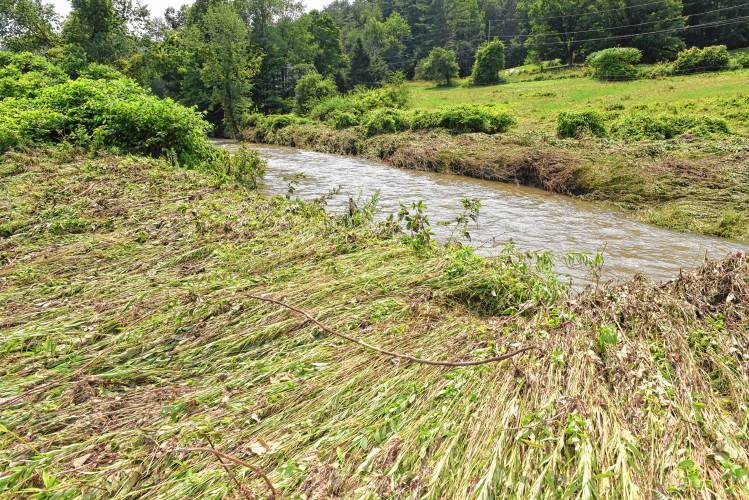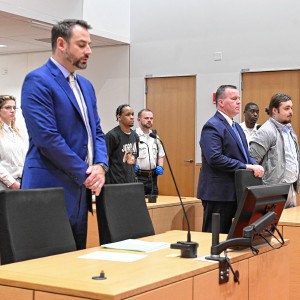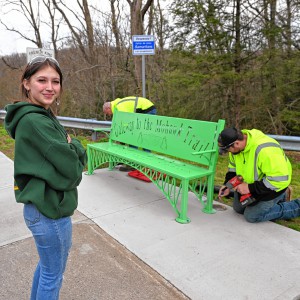Lynne Pledger and Dorothea Sotiros: Soil microbes reduce flooding

STAFF FILE PHOTO/PAUL FRANZ STAFF FILE PHOTO/PAUL FRANZ
|
Published: 04-01-2024 5:44 PM
Modified: 04-02-2024 11:47 AM |
Almost buried in the recent article about clogged drainage ditches was a nugget of wisdom from Astarte Farm manager Ellen Drews [“Farmers spotlight drainage ditch troubles,” Recorder, March 28]. She noted that the farm’s practice of no-till (planting without plowing) protects the land from flooding. In recent decades, scientists have learned how no-till prepares soil to withstand either too much water or too little.
A farmer’s best friends are soil microbes, especially fungi. These invisible organisms, with long, sticky filaments, establish a soil structure that allows rainwater to sink in and be retained in the ground. This structure protects against both flooding and drought. Fungi also bring soil nutrients to plant roots, which increases yields, and take carbon from the roots and sequester it underground, which prevents carbon dioxide from rising into the air. But plowing breaks up the web of filaments that provide all these benefits.
No-till is one of several regenerative practices that foster populations of beneficial fungi, bacteria, and other microbes in gardens and farmlands. Additional practices are eliminating chemical fertilizers and biocides; keeping the ground covered with a variety of growing plants (such as cover crops or perennial pastures); and integrating livestock with cropping operations.
In recent years, agriculturalists and climate scientists have recognized that the regenerative method is an effective, safe, and low-cost way to restore degraded soils and help stabilize the climate.
To understand why a habitable earth depends on protecting whole ecosystems — both fields and forests — take a look at these two websites: bio4climate.org and soil4climate.org.
Lynne Pledger
Shelburne Falls
Dorothea Sotiros
Article continues after...
Yesterday's Most Read Articles
 Greenfield homicide victim to be memorialized in Pittsfield
Greenfield homicide victim to be memorialized in Pittsfield
 Former Greenfield man granted new trial after 1995 murder conviction, walks free
Former Greenfield man granted new trial after 1995 murder conviction, walks free
 On The Ridge with Joe Judd: What time should you turkey hunt?
On The Ridge with Joe Judd: What time should you turkey hunt?
 Judge sets bail for Millers Falls assault suspects
Judge sets bail for Millers Falls assault suspects
 Franklin Tech student welds artistic bench for French King Bridge
Franklin Tech student welds artistic bench for French King Bridge
 As I See It: Between Israel and Palestine: Which side should we be on, and why?
As I See It: Between Israel and Palestine: Which side should we be on, and why?
Greenfield

 Shirley and Mike Majewski: Vote for Blake Gilmore
Shirley and Mike Majewski: Vote for Blake Gilmore Michelle Caruso: Questions candidate’s judgment after 1980s police training incident
Michelle Caruso: Questions candidate’s judgment after 1980s police training incident Kathy Sylvester: Vote for expertise on May 6
Kathy Sylvester: Vote for expertise on May 6 Bernie Sadoski: Blake Gilmore is committed to his community
Bernie Sadoski: Blake Gilmore is committed to his community
